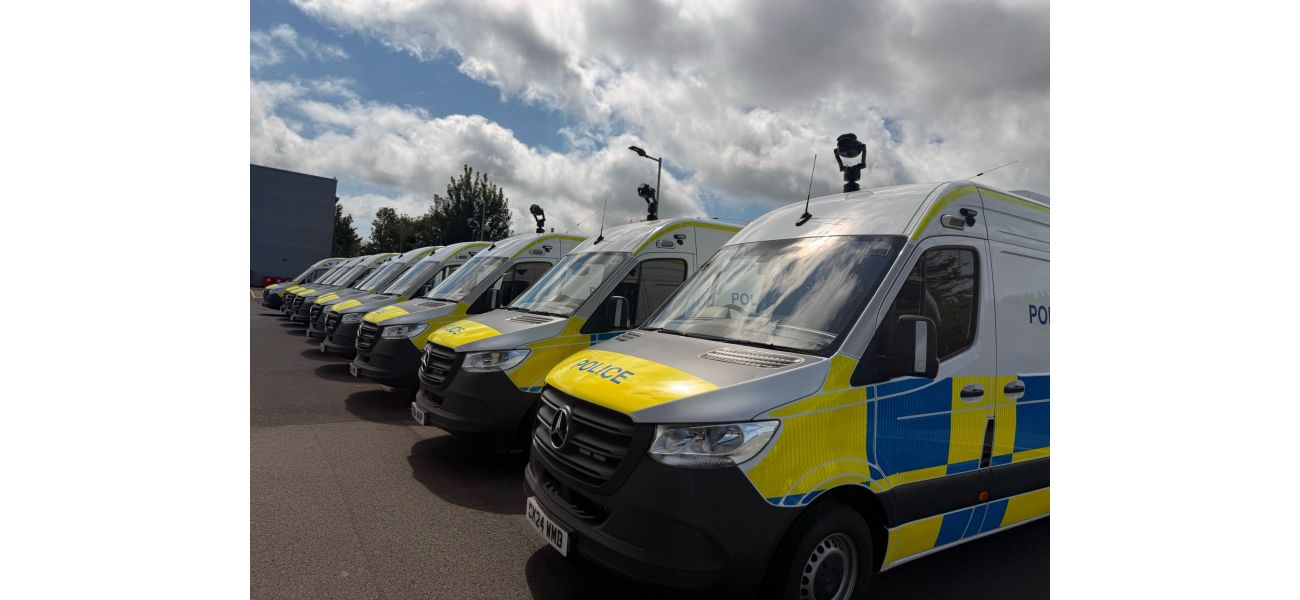The map displays new areas where police vans with facial recognition technology are being implemented.
August 13th 2025.

As part of a nationwide effort to crack down on crime, live facial recognition cameras will soon be introduced in new areas across England. This technology, which scans faces and compares them against a database of known criminals and suspects of serious crimes, has already been in use in London. Now, the Home Office has announced that it will be deploying a fleet of vans equipped with this technology in seven additional areas in the UK.
These vans, equipped with ten cameras each, will soon be patrolling the streets of Greater Manchester, West Yorkshire, Bedfordshire, Surrey, Sussex, Thames Valley, and Hampshire. This means that the number of facial recognition vans in use will roughly double, although the exact number currently in use is not confirmed by the Home Office. Each police force will have the discretion to decide how and when to use the vans in their areas, and each van will be manned by a trained officer.
However, there are limitations on the use of facial recognition cameras in the UK. The law only allows the cameras to be used to check against police watchlists of wanted criminals, suspects, and individuals on bail or court order conditions, such as sex offenders. But this may change in the near future, as the government plans to consult on a new legal framework for the deployment of this technology.
According to Home Secretary Yvette Cooper, the vans will primarily focus on catching sex offenders and individuals wanted for the most serious crimes who have not been located by the police. She also reassures that the algorithm used in the vans has been independently tested and will only be used in specific circumstances with strict oversight.
Despite these reassurances, privacy campaigners have raised concerns about the use of facial recognition technology. They fear that innocent individuals may be mistaken for criminals and that this technology represents a significant expansion of the surveillance state. Rebecca Vincent, the interim director of Big Brother Watch, calls it an "unprecedented escalation" and urges the Home Office to scrap its plans until proper legislative safeguards are in place.
Chief Superintendent Tim Morgan from South Wales Police assures that the technology will be used ethically and in accordance with all legislation and guidance. He also emphasizes that the deployment of the facial recognition vans is part of a larger effort to increase police presence in communities. In addition to the new vans, the government has also announced plans to add 13,000 more officers in communities by 2029.
So how exactly do live facial recognition cameras work? It all starts with identifying a face in a still image or video and mapping its features to create a unique numerical expression. This can then be compared to databases of mapped faces to find a potential match. However, concerns have been raised about the effectiveness of this technology when individuals are wearing face coverings or balaclavas.
Despite these concerns, some Londoners have welcomed the introduction of the surveillance vans in their neighborhoods. Shannon Kirwin, who helps run her family's food van in Croydon, has seen gang violence firsthand and believes that the cameras may help reduce crime. However, she also questions their effectiveness when individuals are wearing face coverings. Overall, the use of facial recognition technology remains a controversial topic, and the government's plans for its deployment will continue to be scrutinized.
These vans, equipped with ten cameras each, will soon be patrolling the streets of Greater Manchester, West Yorkshire, Bedfordshire, Surrey, Sussex, Thames Valley, and Hampshire. This means that the number of facial recognition vans in use will roughly double, although the exact number currently in use is not confirmed by the Home Office. Each police force will have the discretion to decide how and when to use the vans in their areas, and each van will be manned by a trained officer.
However, there are limitations on the use of facial recognition cameras in the UK. The law only allows the cameras to be used to check against police watchlists of wanted criminals, suspects, and individuals on bail or court order conditions, such as sex offenders. But this may change in the near future, as the government plans to consult on a new legal framework for the deployment of this technology.
According to Home Secretary Yvette Cooper, the vans will primarily focus on catching sex offenders and individuals wanted for the most serious crimes who have not been located by the police. She also reassures that the algorithm used in the vans has been independently tested and will only be used in specific circumstances with strict oversight.
Despite these reassurances, privacy campaigners have raised concerns about the use of facial recognition technology. They fear that innocent individuals may be mistaken for criminals and that this technology represents a significant expansion of the surveillance state. Rebecca Vincent, the interim director of Big Brother Watch, calls it an "unprecedented escalation" and urges the Home Office to scrap its plans until proper legislative safeguards are in place.
Chief Superintendent Tim Morgan from South Wales Police assures that the technology will be used ethically and in accordance with all legislation and guidance. He also emphasizes that the deployment of the facial recognition vans is part of a larger effort to increase police presence in communities. In addition to the new vans, the government has also announced plans to add 13,000 more officers in communities by 2029.
So how exactly do live facial recognition cameras work? It all starts with identifying a face in a still image or video and mapping its features to create a unique numerical expression. This can then be compared to databases of mapped faces to find a potential match. However, concerns have been raised about the effectiveness of this technology when individuals are wearing face coverings or balaclavas.
Despite these concerns, some Londoners have welcomed the introduction of the surveillance vans in their neighborhoods. Shannon Kirwin, who helps run her family's food van in Croydon, has seen gang violence firsthand and believes that the cameras may help reduce crime. However, she also questions their effectiveness when individuals are wearing face coverings. Overall, the use of facial recognition technology remains a controversial topic, and the government's plans for its deployment will continue to be scrutinized.
[This article has been trending online recently and has been generated with AI. Your feed is customized.]
[Generative AI is experimental.]
0
0
Submit Comment





